Advertisements
Advertisements
Question
Yesh find out F1 and F2 of symmetric convex lens experimentally then which conclusion is true.
Options
a) 𝐹1 = 𝐹2
b) 𝐹1 > 𝐹2
c) 𝐹1 < 𝐹2
d) 𝐹1 ≠ 𝐹2
Solution
a) 𝐹1 = 𝐹2
APPEARS IN
RELATED QUESTIONS
If you focus the image of a distant object, whose shape is given below, on a screen using a convex lens, the shape of the image of this object on the screen would be:
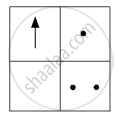
(a)
(b)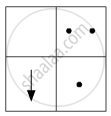
(c)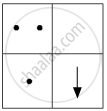
(d)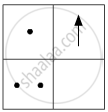
When a ray of light enters from one medium to another having different optical densities it bends. Why does this phenomenon occur?
An object is placed at a distance of 12 cm from a convex lens of focal length 8 cm. Find :
1) the position of the image
2) nature of the image
A beam of light travelling in air is incident of water. Draw a ray-diagram indicating the change in its path in water.
If an object is at a considerable distance (or infinity) in front of a convex lens, where is the image formed?
What type of lens would you use as a magnifying glass? How close must the object be to the lens?
Describe with the help of a ray-diagram, the formation of image of a finite object placed in front of convex lens between f and 2f. Give two characteristics of the image so formed.
With the help of a labelled diagram explain how a convex lens converges a beam of parallel light rays. Mark the principal axis, optical centre, principal focus and focal length of the convex lens on the diagram.
A convex lens has a focal length of 10 cm. At which of the following position should an object be placed so that this convex lens may act as a magnifying glass?
(a) 15 cm
(b) 7 cm
(c) 20 cm
(d) 25 cm
An object 50 cm tall is placed on the principal axis of a convex lens. Its 20 cm tall image is formed on the screen placed at a distance of 10 cm from the lens. Calculate the focal length of the lens.
A beam of parallel light rays is incident through the holes on one side of a box and emerges out through the holes on its opposite side as shown in the diagram below:
Which of the following could be inside the box?
(a) a rectangular glass block
(b) a concave lens
(c) a convex lens
(d) a glass prism
What kind of lens can form:
an inverted magnified image?
What type of lens is used to correct
hypermetropia
Complete the following sentence.
A long-sighted person cannot see ........... objects clearly. Long-sightedness can be corrected by using .............. lenses.
The diagram alongside shows the refraction of a ray of light from sir to a liquid.
(a) write the values of (i) angle of incidence, (ii) angle of refraction.
(b) use snell’s law to find the refractive index of liquid with respect to air.
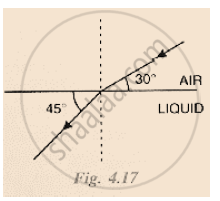
A light ray does not bend at the boundary in passing from one medium to the other medium if the angle of incident is:
Draw a diagram to represent the second focus of a convex lens.
A parallel oblique beam of light falls on a convex lens. Draw a diagram to show the refraction of light through the lens.
A converging lens forms the image of an object placed in front of it, beyond 2F2 of the lens. Draw a ray diagram to show the formation of the image.
A lens forms an upright and magnified image of an object. Name the lens.
A lens forms an upright and magnified image of an object State whether the image is real or virtual
List four properties of the image formed by a convex mirror.
If you are to determine to focal length of a convex lens, you should have
(A) a convex lens and a screen
(B) a convex lens and a lens holder
(C) a lens holder, a screen holder and a scale
(D) a convex lens, a screen, holder for them and a scale
For which position of the object does a convex lens form a virtual and erect image? Explain with the help of a ray diagram.
The image obtained while finding the focal length of convex lens is ....................
(a) What type of a lens can be used as a magnifying glass?
(b) Show by a ray diagram the formation of a real image by simple magnifying lens.
State the position of object, position of image, nature of image when: Convex lens is used in cine projector.
State the position of object, position of image, nature of image when: Convex lens is used as in searchlight.
Write the three characteristics of the image formed by a convex lens of focal length 20 cm for the object at distance (i) 10 cm, (ii) 30 cm, (iii) 40 cm, (iv) 60 cm from the lens.
Define the terms principal foci and focal lengths as applied to a convex lens, and show them with the help of proper diagrams.
Object at 2F1 of a convex lens : Image at 2F2 : : Object at F1 : _______
Find the odd one out and give its explanation.
Write the name.
The lens used in simple microscope.
Which of the following statements is true?
 |
 |
The above images are that of a specialized slide projector. Slides are small transparencies mounted in sturdy frames ideally suited to magnification and projection since they have a very high resolution and a high image quality. There is a tray where the slides are to be put into a particular orientation so that the viewers can see the enlarged erect images of the transparent slides. This means that the slides will have to be inserted upside down in the projector tray.
To show her students the images of insects that she investigated in the lab, Mrs. Iyer brought a slide projector. Her slide projector produced 500 times enlarged and inverted image of a slide on a screen 10 m away.
a. Based on the text and data given in the above paragraph, what kind of lens must the slide projector have?
b. If v is the symbol used for image distance and u for object distance then with one reason state what will be the sign for `"𝑣"/"𝑢"` in the given case?
c. A slide projector has a convex lens with a focal length of 20 cm. The slide is placed upside down 21 cm from the lens. How far away should the screen be placed from the slide projector’s lens so that the slide is in focus?
OR
c. When a slide is placed 15 cm behind the lens in the projector, an image is formed 3 m in front of the lens. If the focal length of the lens is 14 cm, draw a ray diagram to show image formation. (not to scale)
Distinguish between:
Concave lens and Convex Lens
